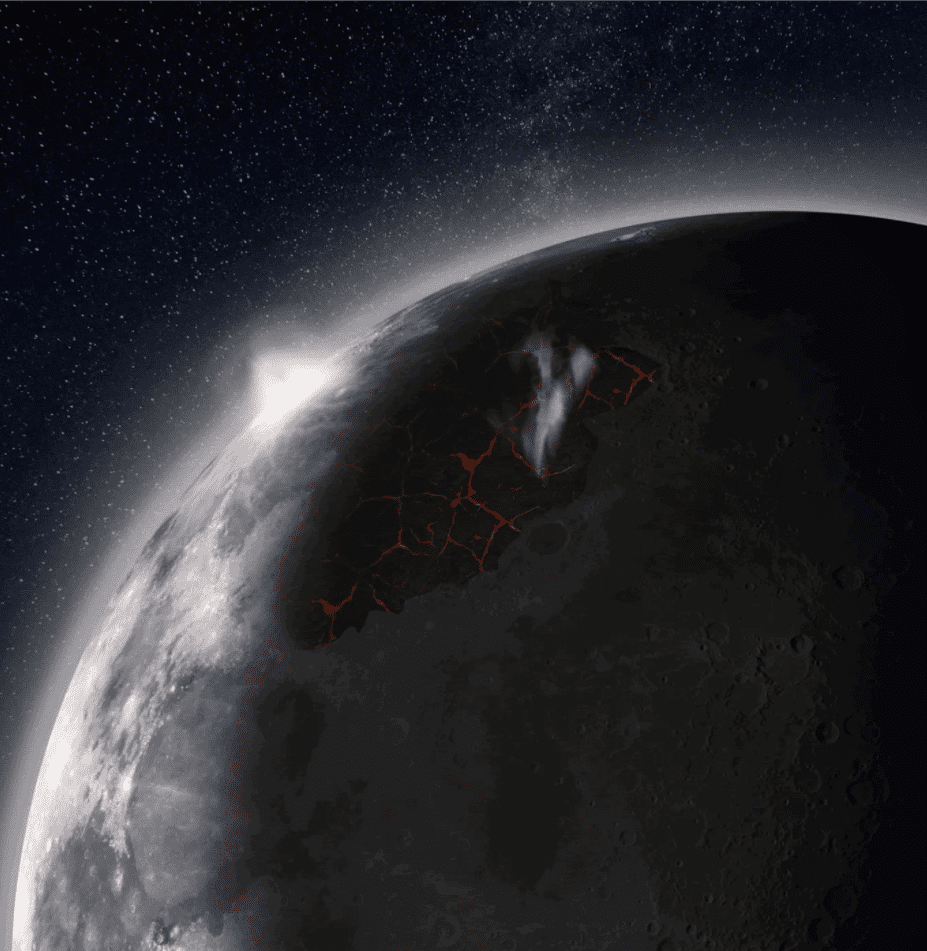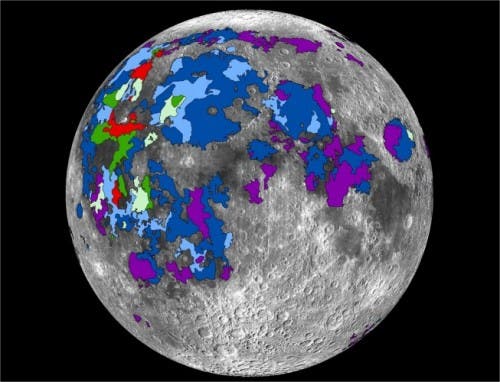Today, the lunar atmosphere is extremely thin, but 3-4 billion years ago, volcanic eruptions spewing giant clouds of gas may have seeded a much denser atmosphere.

Until rather recently, scientists thought the Moon has virtually no atmosphere. The various lunar probes we’ve sent through the years, however, sniffed traces of unusual gases, including sodium and potassium, which are not found in the atmospheres of Earth, Mars or Venus. Other gases present in the lunar air include helium and argon, and might also include neon, ammonia, methane, and carbon dioxide. Overall, the lunar exosphere is about 10 trillion times thinner than Earth’s atmosphere at sea level — comparable to the density of the outermost fringes of Earth’s atmosphere near the International Space Station. In other words, there’s not much, but there’s still a detectable atmosphere present, nonetheless.
A sight to behold
Scientists at NASA’s Marshall Space Flight Center claim that things may have looked radically different three to four billion years ago when the Moon’s ancient volcanoes were active. For about 70 million years, the volcanoes spewed gases that produced a temporary atmosphere bounded by the moon’s gravity. This information is based on an analysis of volcanic glasses collected on site by Apollo-era astronauts, which contained carbon monoxide, water’s ingredients, sulfur, and other volatile species.
From Earth’s vantage point, it all must have been quite a sight — like staring into the eye of a nearby alien planet.
“The total amount of H2O released during the emplacement of the mare basalts is nearly twice the volume of water in Lake Tahoe,” Debra Needham, a research scientist at NASA’s Marshall Space Flight Center, said in a press release. “Although much of this vapor would have been lost to space, a significant fraction may have made its way to the lunar poles. This means some of the lunar polar volatiles we see at the lunar poles may have originated inside the Moon.”
Volcanism on the moon is evident to this day by vast plains of basaltic lavas called maria which cover much of the lunar surface. Back in the day, early astronomers used to think these plains were seas of lunar water. The activity that created these ancient lava fields peaked about 3 billion years ago but a 2014 study found dozens of ‘burps of volcanic activity’, some as young as 100 million years, suggesting the moon is warmer than previously thought.

This new research, led by Dr. Debra H. Needham and Dr. David A. Krin paints a more vivid picture of ancient lunar volcanism. The NASA scientists calculated the amounts of gases that rose from the erupting lavas, finding the “two largest pulses of gases were produced when lava seas filled the Serenitatis and Imbrium basins about 3.8 and 3.5 billion years ago, respectively.”
The paper published in the journal Earth and Planetary Science Letters may have implications for future lunar explorations, particularly the prospect of mining the Moon’s resources. Some of the volatile chemicals identified by the researchers could be trapped in the shadowed lunar poles. Mining these icy deposits could provide a settlement with the air and fuel required for a habitat and day-to-day surface operations, as well as the resources for missions beyond the Moon. What’s more, the volatile gases “may hold clues about the material that accreted to form the Earth and Moon and, thus, our planetary origins.”



